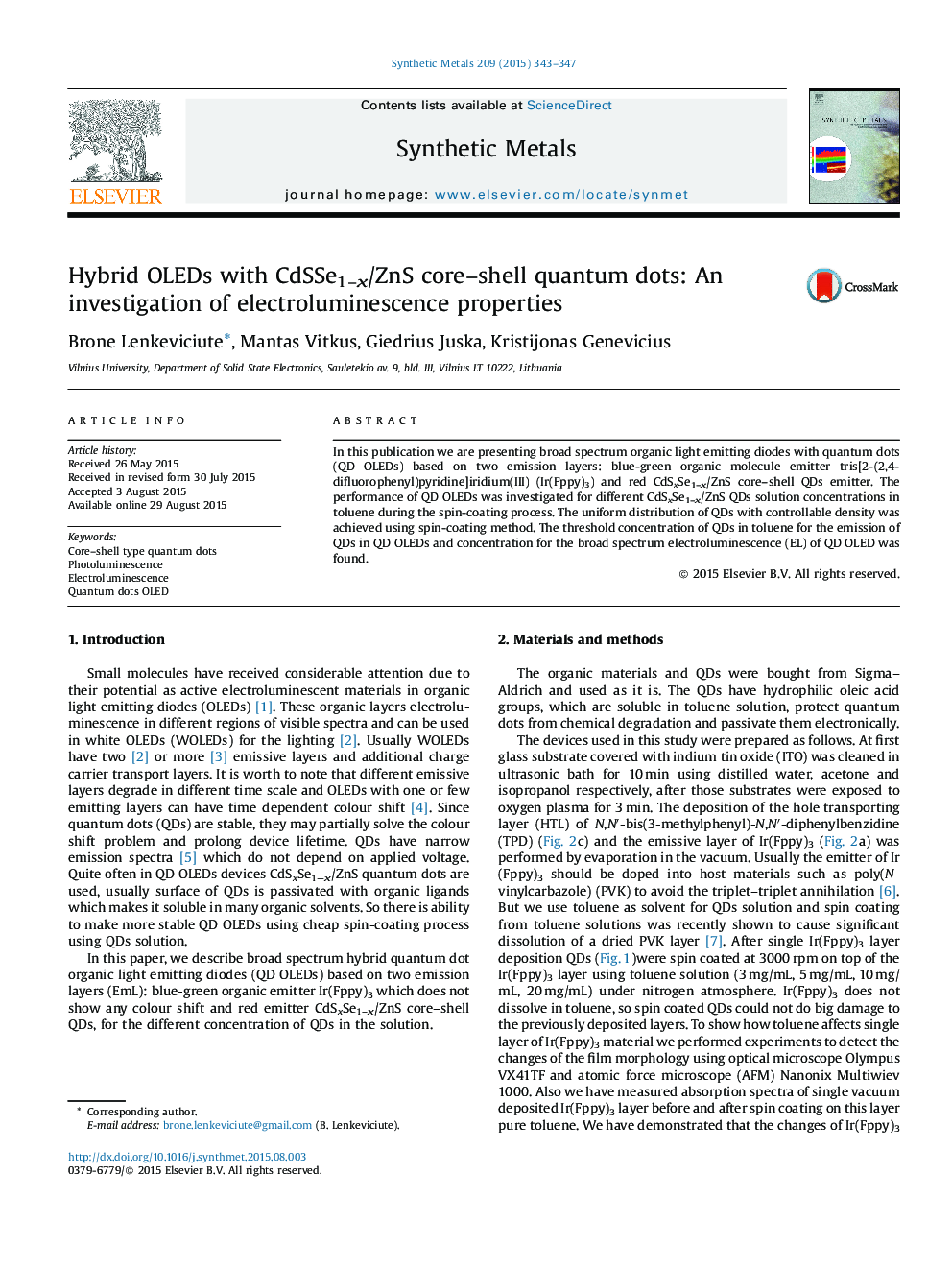| Article ID | Journal | Published Year | Pages | File Type |
|---|---|---|---|---|
| 1440512 | Synthetic Metals | 2015 | 5 Pages |
•We have demonstrated broad visible spectra QD OLEDs with two emission layers which consist of vacuum evaporated organic material Ir(Fppy)3 and spin-coated CdSxSe1–x/ZnS QDs.•The optimal concentration for the QD OLED best performance with CRI = 66 of the QDs is 5 mg/mL in toluene.•The emission spectrum of Ir(Fppy)3 and the simultaneous existence of incomplete energy transfer from Ir(Fppy)3 to CdSxSe1–x /ZnS QDs and carrier trapping in CdSxSe1–x/ZnS QDs leads to broad light emission in visible spectrum.
In this publication we are presenting broad spectrum organic light emitting diodes with quantum dots (QD OLEDs) based on two emission layers: blue-green organic molecule emitter tris[2-(2,4-difluorophenyl)pyridine]iridium(III) (Ir(Fppy)3) and red CdSxSe1–x/ZnS core–shell QDs emitter. The performance of QD OLEDs was investigated for different CdSxSe1–x/ZnS QDs solution concentrations in toluene during the spin-coating process. The uniform distribution of QDs with controllable density was achieved using spin-coating method. The threshold concentration of QDs in toluene for the emission of QDs in QD OLEDs and concentration for the broad spectrum electroluminescence (EL) of QD OLED was found.
Graphical abstractFigure optionsDownload full-size imageDownload as PowerPoint slide
